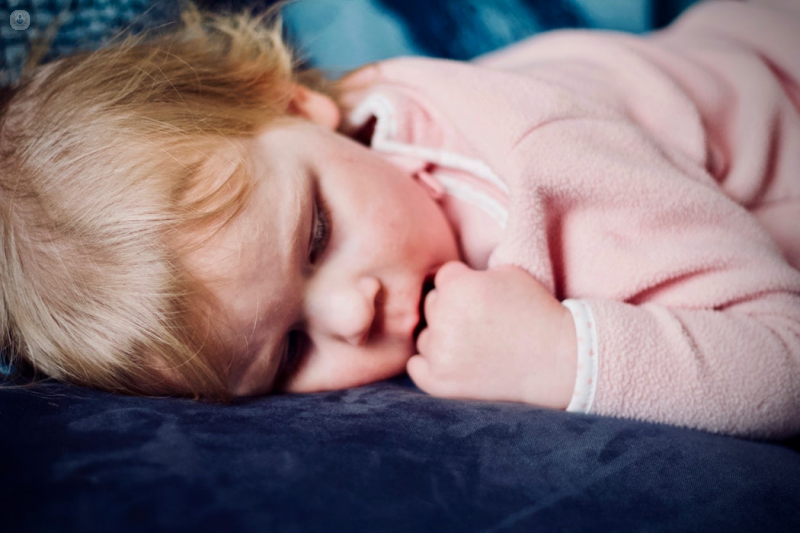Fever in children
Autore:When your child has a high temperature, it can be worrying. Fevers are a common symptom of illness, especially in young children. In fact, they are part of the body’s natural response to an infection. What exactly is a fever and why does the body react this way? Esteemed consultant paediatrician, Dr Bushra Al-Rubeyi, explains.

What is a fever?
A fever is where the individual’s body temperature rises in response to illness. Normal body temperature for children is generally between 36.5°C and 37.5°C (although this can vary depending on the child in question, their age, and the time of day). Fever is usually defined as being above 37.5°C.
Taking your child’s temperature
Electronic thermometers are the most accurate way to measure your child’s temperature and check for fever. Modern electronic thermometers include those placed in the armpit and those that are placed into the ear.
Simply touching the child’s forehead does not accurately tell you if they have a fever, nor do fever strips. Oral and rectal thermometers should not be used on children aged five and under.
Benefits of fever
Raising body temperature has several benefits when fighting disease:
- Fever inhibits the growth of bacteria by reducing levels of iron and zinc in the blood, while creating conditions where bacteria need more of these substances.
- Fever stimulates the production of interferon, which fights viruses.
- Fever prompts the immune system to attack invading microorganisms directly and aggressively.
- Antibiotics tend to work more effectively at killing bacteria at temperatures caused by fever.
For all these reasons, a fever makes the body a more hostile environment for bacteria and viruses to survive in.
Symptoms of fever in children
In addition to a body temperature of over 37.5°C, a child may have the following symptoms:
- fatigue
- pale skin
- lack of hunger
- cold extremities
- shivering
- general malaise (feeling ill)
Lowering your child’s fever
Most fevers in children are caused by viruses, which usually clear up on their own. Keep an eye on your child and make sure there are no other symptoms apart from their temperature. Often, parents or carers try hard to bring the child’s temperature down, but it is important to remember that fever is part of the body’s natural response, and can often be left untreated if it is not causing distress to the child.
Here are some more tips:
- Tepid sponging is not recommended.
- “Don’t treat the thermometer, treat the child” – for example, don’t give the child painkillers such as paracetamol or ibuprofen just to lower their temperature.
- Don’t give the child paracetamol and ibuprofen at the same time. However, if one isn’t effective, consider the other.
- Make sure your child is dressed appropriately – don’t wrap them up or let them wear too few clothes.
- Keep the room cool (but not cold!) – 18°C (65°F) is usually ideal.
- Keep your child hydrated, drinking plenty of fluids.
- Make sure your child gets enough restful sleep.
When should you call the doctor?
Watching your little one feeling so hot and bothered might not be easy, but most fevers disappear soon enough. The philosophy should be “don't treat the thermometer, treat the child”, meaning that treatment is only needed if the child’s behaviour is affected.
If you feel your child is seriously ill, needs help, or if you have any questions, call your doctor – healthcare professionals are there to help!
Occasionally, fever can be an indication that the child has a serious illness. You should call your doctor immediately or take the child to hospital in the following circumstances:
- Your baby is younger than 3 months and has a temperature of 38°C (101°F) or above.
- Your baby is 3-6 months old, with a temperature of 39°C (102°F) or above.
- Your child is over 6 months of age and has other symptoms of illness besides fever, e.g. drowsiness, breathlessness, vomiting, fitting, or a rash.
If you would like to consult a specialist, don't hesitate to reach out to Dr Bushra Al-Rubeyi via her Top Doctors profile today to book an appointment.
References
- NICE guidelines on management of fever
- Bupa Health Information Team, February 2013.
- NHS choices


